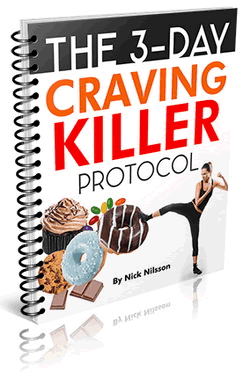The first thing you need to know about nutrition is that it doesn't have to be intimidating.
On this page we will take you through some basic nutritional information and procedures on how to incorporate healthy eating into your life.
Don't try and understand it all!
People may see all the new research about every single little nutrient and vitamin and miracle pill that comes along and wonder how they can ever understand it all. Don't even try because you really don't need to know it all.

Step 1 - Understand the Basics of Nutrition
There are three major nutrients that you eat every day. This table will show you what they are, how many calories are in one gram of each, what their primary function in the body is and what foods they are found in.
Protein
- It is the body's main structural nutrient.
- All muscles and tissues are made from protein.
- The immune system uses protein.
- Foods it's found eggs, meats, fish, beans, dairy products, soy.
- Protein contains 4 calories per gram
Carbohydrates
- This is preferred energy source of the body.
- Carbs supply fast energy to the muscles for activity.
- Foods include grains, pastas, cereals, breads, vegetables, fruits, corn syrup, anything with sugar in it.
- Carbs contain 4 calories per gram
Fat
- This is the energy storage nutrient in the body.
- Fats are also used as a source of energy for low-intensity activity.
- Foods include all oils (e.g. olive, peanut, canola, vegetable), butter, margarine, meats, junk food.
- Fats contain 9 calories per gram
Water
Water is not often thought of as a nutrient but it is essential to all bodily functions and processes. Without water you would die. It is important to drink plenty of water throughout the day. The amount of water you need will depend on your body size, bodyfat percentage, activity level, climate and more.
Fiber
Fiber is an essential part of your diet. It is an indigestible component of many natural-state carbohydrate foods such as grains. Fiber helps to move food through your digestive system as well as keeping you regular and helping you feel full after eating.
Step 2 - USE the Basics of Nutrition
Once you know what the basics are, it is up to you to use that knowledge in your everyday eating habits. Here are some pointers to help guide you.
1. Every meal divide your plate into thirds. Two of the thirds should be a carbohydrate source, e.g. rice or potatoes and one third should be a protein source, e.g. meat or fish. Don't worry about getting enough fat. That is rarely a problem.
2. Eat foods that are unprocessed as much as possible. When foods are processed they lose nutritional value. Eating foods close to their natural state will give you the most benefits. Try to stay away from junk food. You know what constitutes junk food. Reducing the amount that you eat will have a huge impact on your health and well-being.
3. Limit your eating of refined foods that have fat, salt and sugar in them. You don't have to give them up completely, just eat them in moderation.
4. Eat protein. This is not to recommend that you go and eat a steak everyday but be aware of your protein intake. Your muscles live on protein and muscles are where the majority of your calories are burned. Eating lean protein every day supports your muscle tissue, especially when exercising.
Conclusion:
Most people intuitively know what constitutes good nutrition, they just fail to practice it in their everyday lives. Making an effort and planning meals ahead of time will pay off with better health and longer life.
![]()
More From Fitstep.com
| Countdown Alternating Sets for Legs | |
| Fat Loss Circuit Training With Dumbbell Crawling | |
| The Great Big List of Calorie-Free Foods | |
| Breathe Backwards For More Effective Pulldowns |
Share This Page...
---
Home -> Fitness For Beginners -> Where to Start -> Basic Nutrition



